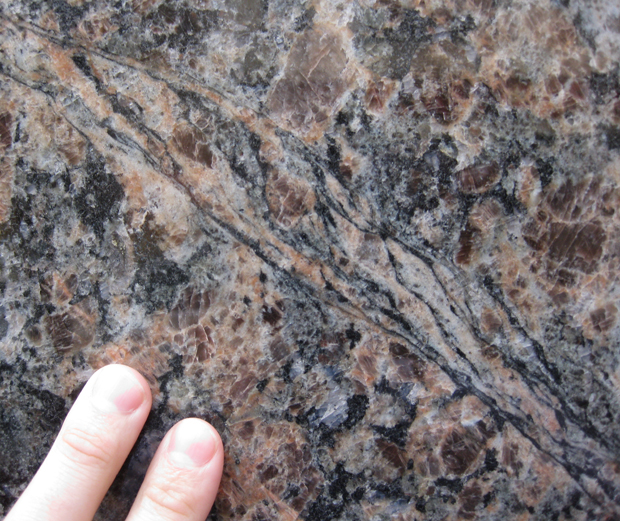Friday fold: Floor paver in the Atlanta airport
On my way back to Virginia from Hawaii, I had a three hour layover in the Atlanta airport. There, I spotted this charismatic stone paver on on the terminal floor. It showed folds, and so I snapped a photo, but it also shows plenty more… An annotated copy: Happy Friday, all!


